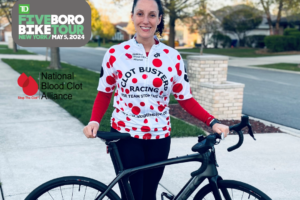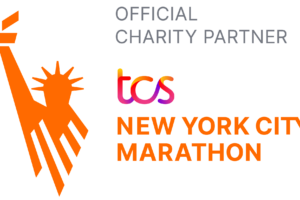Most often, active people – athletes or people who routinely train and exercise – are shocked and stymied by the impact of their clotting incident. Health professionals get lots of questions. Two question stand out that most athletes want to know:
1. Can I continue my sport while on warfarin?
To determine whether you can stop taking wafarin or whether you need to keep taking it after you’ve had a blood clot, you need a solid medical assessment. While you take warfarin, you care an increased risk of bleeding. Therefore, while on warfarin, you should not participate in contact sports and sports with a risk of serious injury, such as football, hockey, basketball, soccer, gymnastics, alpine skiing, or boxing. However, if you are a runner, bicyclist or triathlete, you may be able to continue your sport, but you should adapt your activities to avoid trauma that might put you at risk for bleeding (i.e. avoid situations leading to bicycle crashes, etc.). Your health care provider may be able to design your individual blood thinning treatment plan to meet your needs. For example:
- Decrease your warfarin dosage a few days prior to athletic events that would otherwise put you at increased risk for bleeding;
- Switching you to low molecular weight heparin shots during the athletic season, and interrupting the shots for competitions that pose a risk of bleeding; or
- Stopping blood thinners during the season and accepting a higher risk for blood clots during that time, but restarting warfarin during the off season.
Finally, you may decide to switch from a high risk bleeding competitive sport to one with a lower risk. Obviously, these are all very individual treatment decisions that you should discuss with your personal physician, and the team physician (if you participate in a team sport)
2. How soon after a DVT or PE can I go back to training?
Patients with a DVT may have significant arm or leg swelling and pain which may improve only slowly over weeks and months. Some residual symptoms may persist long-term, this is termed “post-thrombotic syndrome.” It appears that being highly active one month after a DVT is not detrimental; it may, actually be beneficial and lead to less symptoms of post-thrombotic syndrome (reference 2). This can support your return to physical activity relatively soon after a DVT. Also, if you wear individually fitted compression stockings, this decreases your long-term risk for post-thrombotic syndrome.
No official guidelines exist as to when and how quickly athletes might return to exercising. Each athlete will need an individualized exercise plan (an example is described in reference 3). It seems appropriate to refrain from any athletic activities for the first 10-14 days after an acute DVT or PE until the clot is more adherent to the blood vessel wall and the risk of having the clot break loose (causing a PE) has decreased. To lessen de-conditioning during this period of relative inactivity, you may do some strength training – arm and trunk exercises in the case of a leg DVT, leg and trunk exercises in the case of an arm DVT. You may then increase activity between week 2 and 4 and return to pre-clot activity levels by week 4.
Read Stories of Athletes who have had Blood Clots
Patient Stories in Their own Voices
- Tim Allen Tells His Blood Clot Survival Story
- In Memory of Kyle Baca: His Blood Clot Story as Told by His Mother
- Rebekah Bradford’s Blood Clot Story
- Dan Capobianco Tells His Blood Clot Survival Story
- Jim Fenton’s Blood Clot Survival Story
- Hope’s Story of Blood Clots as a Warning Sign for Cancer
- Michelle Sirois’s Story
- Michelle Winters’ Blood Clot Story





